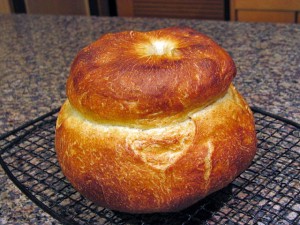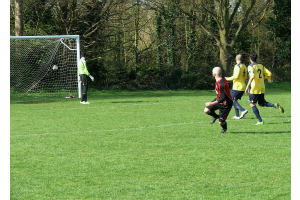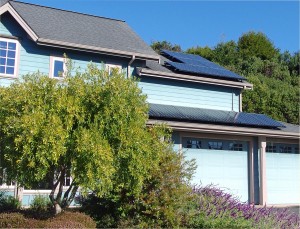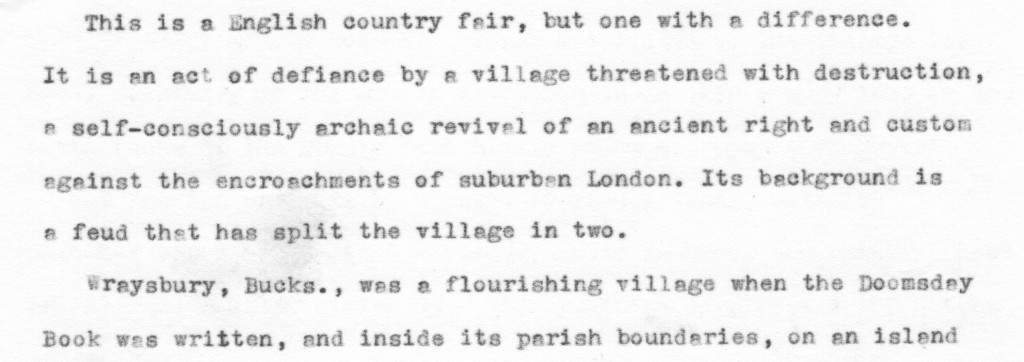Archive for November, 2015
Rooftop solar panel program at risk
I’ve just done my citizen activist stint for the week: fired messages to the California Public Utilities Commission, Governor Brown, and my state assemblyman and senator regarding a proposal by big utility companies to gut the rooftop solar panel business by increasing infrastructure fees and drastically reducing the credit solar panel owners get paid for releasing the surplus electricity they generate. It seems that letting consumers generate their own electricity is cutting into big business’s profits. The CPUC is expected to make a decision by mid-December.
Here’s what I wrote to the CPUC. If you’re interested in adding your voice, you can find more information at:
http://mendocinosolar.com/ (our vendor)
http://www.saverooftopsolarca.com/
TO: California Public Utilities Commission
In this time of global climate change, I urge you to reject a proposal by utility companies to gut the solar “net metering” program by increasing infrastructure fees and severely reducing the credit solar panel users earn by selling their daily surplus to utility companies. The utilities’ proposal privileges company profits over responsible citizens’ response to the challenge of global warming.
When my husband and I had solar panels installed on our house nearly two years ago, we contracted with PG&E to pay a monthly service fee, which we assumed was based on a reasonable calculation of our share of infrastructure costs. We also contracted to sell back our excess power at a reasonable market rate. If allowed to charge excessive fees, and/or short solar panel owners as vendors of electricity, PG&E and other utility companies will not only discourage other people from installing rooftop solar systems, but also discourage users of existing solar panel installations to be frugal and responsible in their use of electricity, since there will be no incentive to conserve.
The issues raised by global warming are so huge that we cannot allow any backsliding on conservation. Again, please reject the utility companies’ proposal.
The many names of bread

A cottage loaf. Image from Bewitching Kitchen
Living as I do in Mendocino, CA, I am blessed with access to excellent local bakeries offering a wide variety of breads. I was amused to find in my old black filing cabinet this article I wrote for my New Zealand newspaper about discovering there were more names for bread than “white” and “brown.”
Slindon Bakery’s website has many pictures of these traditional English breads.
A Loaf by Any Other Name
London, 1962
The shelves of a baker’s shop anywhere in New Zealand will be much the same—piled high with round-topped loaves in brown or white, square white sandwich loaves, and pre-cut wrapped bread, and although North Islanders and South Islanders may argue for hours over whether the broken half of the double loaf should be called a “half” or a “quarter”, they will usually be able to make themselves understood in any bakery.
Imagine then the confusion of a New Zealand housewife confronted with the window of an English bakery, filled with loaves in an incredible variety of shapes and sizes. Some of the shapes are wonderfully decorative. There will be long thin loaves and short fat ones, some decorated with grain and some with shining glazes. There will be complicated plaits and squat little knots, enormous swelling crusty loaves, and incredibly long thin rolls that look as if they have been transplanted from the Continent.
The vagaries of English custom have established different names for these traditional shapes from town to town, and sometimes even from shop to shop in the same town.
The biggest and crustiest loaf of them all is usually called a “farmhouse.” It is a tall white loaf, often bursting from a long crack in its top. It has a close relation in the “split tin”, which does not appear to be split at all, but merely a white loaf, again with a cracked top, baked in a narrow oblong tin. These loaves are not to be confused with the “Danish”, which is not baked in a tin at all, but rises as a large oval loaf, dusted with white flour, from a flat tray.
Then there are the more elaborate shapes, such as the “cottage”, often confused with the “farmhouse”. The “cottage” is made with two balls of dough, the smaller being set like a top-knot on top of the larger. Another even more complicated one is the double plait, which contains, as its name implies, two plaits of dough set one on top of the other.
Some of the small round loaves have fascinating names. There is a ball of rich wholemeal bread decorated with wheat grains, which is called, appropriately enough, a “round meal”, but the white ball, this time with a shining brown glaze, is known as a “cob.” This is reputed to be short for “Coburg”, but where this name came from few seem to know.
The origins of other names are more obvious. One delicious scone loaf, which is sold in quarter segments of a large flat disk, is known in England as “Scotch fare”. In Wales, however, they are sold as “Welsh babs”.
A small light white loaf with a shiny glazed crust decorated with diagonal slashes, and known as a “Continental”, has a large elder brother with various titles, but usually known as a “twist” or a “bloomer”. This odd name can cause difficulties, and it has happened that an order for “A large bloomer, thank you” has met with raised eye-brows from the shops that have not heard of this title. In most cases, it is safer to point: “That one over there” and then politely ask the name of the specimen as it is being wrapped up.
Politics in an old English village
My journalist instincts kicked in when I discovered a seething political battle behind a traditional English fair, in Wraysbury, a village on the Thames west of London. In my old black filing cabinet I found a copy of the article I wrote in 1962 for my Christchurch, New Zealand newspaper. I’ve appended a transcript.

A 2014 soccer game on Wraysbury Green. Photo courtesy of Cookham Dean Football Club.
A postscript: the Wraysbury Village Association won their appeal in July 1962. A search on Google Maps shows there is still a substantial green, with playing fields and tennis courts.
LEGAL BATTLE OVER VILLAGE FAIR
In the shade of ancient oaks and chestnuts, where the sweet scent of hay rises from the scythed grass, the sounds of the fair blare out from merry-go-rounds and coconut shies. Across the green, starry with clumps of white daisies, tents and stalls are filled with people inspecting plants, basketwork, and local works of art, or watching a potter at his wheel, or quaffing ale in the refreshment tent.
Wrestlers, fencers and gymnasts display their skills, and a model train, ponies and donkeys give rides across the green to excited children. The soft fluff of dandelion seeds fills the air, and above the trees dozens of swirling balloons make patterns against the warm summer sky. Pretty girls in long skirts, frilly white blouses and straw bonnets are selling programmes.
This is an English country fair, but one with a difference. It is an act of defiance by a village threatened with destruction, a self-consciously archaic revival of an ancient right and custom against the encroachments of suburban London. Its background is a feud that has split the village in two.
Wraysbury, Bucks., was a flourishing village when the Domesday Book was written, and inside its parish boundaries, on an island in the Thames, Magna Carta was signed by King John. Now overhead the whine of airliners rising from London’s Heathrow airport vie for attention with the swooping and twittering swallows. All round the village the tentacles of London’s urban sprawl show themselves in rows of smart modern houses. Closer and closer to the village the heavy machinery of the gravel merchants turns this swampy land on the north banks of the Thames into untidy pools and mounds of gravel.
Now the old manor farm, a relic of feudal times, is to go under the hammer. Most of the farm will be broken up—“for building development and gravel extraction.”
Most of this change has been taken philosophically by the residents of Wraysbury, many of whom have themselves come to the village from the crowded heart of London. But three years ago a crisis developed. A building speculator who had bought part of what was once the village green asked the villagers to waive their rights to this patch of land.
“What rights?” the villagers asked. They discovered that when the great enclosures had taken place in the 18th and early 19th centuries, a private Act of Parliament had in 1803 safeguarded to the use of the villagers certain footpaths down to and along the banks of the Colne Brook, which runs through the village, and also the right to hold, on the Friday afternoon after Whit-Sunday, the ancient and traditional fair on the village green.
This green is now in three sections, one of which was bought by public subscription for the village. Another section was bought by the local tennis club, and the third by the building speculator.
The speculator’s plot, like his request, is insignificant in itself, but the villagers believe that a major principle is at stake, particularly as a gravel contractor at the same time asked for a waiving of rights on one of the old footpaths, in order to extend his gravel extracting operations.
The villagers’ main concern is their remaining village green. If they were to give way in the two present cases, they feel that the Act which safeguards their rights will be undermined, and they will have no means of defending what is left.
When the matter was first broached, friends of the builder called a public meeting of the residents, who turned down the request by about 300 votes to 10. The builder decided, however, to continue his scheme. His opponents formed a residents’ association to protect their rights, accused the parish council of complicity, stupidity, or both, and applied to the court for an injunction to restrain the builder.
On the other side were ranged the parish council, half of whom were replaced by the association’s nominees at the next election, and those builders who were interested in property development, and who considered that the opposition were obstructing legitimate progress.
The association won their case, but an appeal is pending. Meanwhile, they determined to revive the traditional fair, which had not been held for 50 years. The fair itself, like most English country fairs, is a relic of pagan times, when it was a feast to honour gods and heroes. With the coming of Christianity the custom was adapted to a wake, or all-night vigil, which the parishioners spent in the church. It was followed the next day by eating and drinking and rural games.
The wakes, which had by that time become very riotous affairs, were stopped by Henry VIII. Charles I revived the old custom, but took the precaution of ordering that his Justices of the Peace should be responsible for preventing any disorders. By this time the religious aspect of the feast had become of secondary importance, and hawkers and peddlers of merchandise of all descriptions began to put in an appearance.
But the right to hold a fair was still held so sacred that, even through the great enclosures of the agrarian revolution, it was preserved to the village on the remnants of common land. It is this right which the villagers of Wraysbury are defending today. They do not see their fair as a sacred feast, but rather as a symbol of their right to keep a beautiful patch of ground for their, and their children’s recreation.
The explain it in their programme, which describes the purpose of the fair:
“In these days of giant squid corporations and almost omnipotent local authorities, it is by no means impossible that what the Act of 1803 salvaged from the ruins of the old manorial system might yet get mislaid and turn up in somebody’s back yard.”

